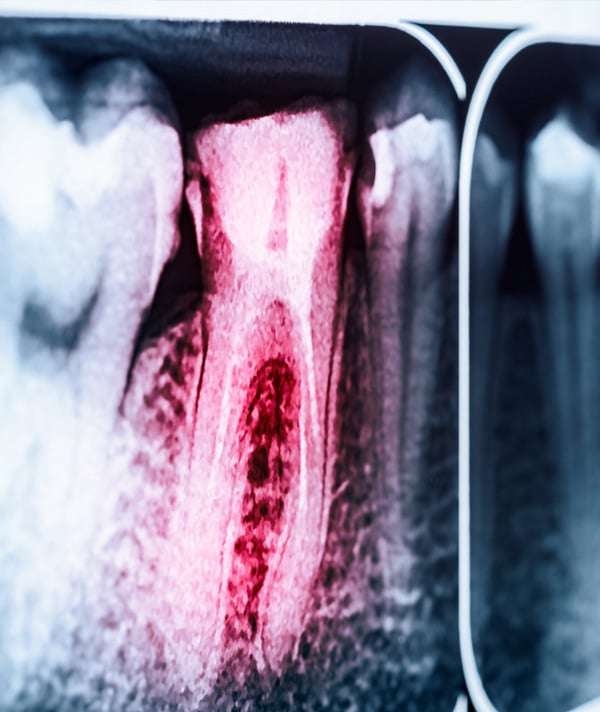Root Canal Treatment In Bondi
Root Canal Therapy
Bondi Family Dentist — professional, gentle, and trustworthy. Our dentists have the expertise to diagnose and treat infected teeth with root canal therapy.
We are committed to ensuring that every patient receives expert treatment in a welcoming environment. If you’re experiencing tooth pain or suspect you may need root canal therapy, don’t hesitate to contact Bondi Family Dentist.

Why Bondi Family Dentist?

600+ 5-star reviews

Over 25 years of experience

A diverse range of dental services

A family-friendly dentist
What Clients Say About Bondi Family Dentist
What Is Root Canal Treatment?
A tooth consists of two parts – the crown and the root. The crown is the surface of your teeth that you use for chewing. The root is the portion beneath your gum line that holds the dental pulp, which consists of nerves, tissue, and blood supply.
Root canal treatment is highly effective in saving a tooth from extraction and alleviating pain caused by infection. Modern techniques make the procedure relatively comfortable, allowing you to preserve your natural teeth and maintain oral health.
What Does the Procedure Involve?
Before beginning treatment, your dentist will take dental X-rays of the affected tooth to identify the extent of the infection and the shape of the root canals. They may do other tests to determine if your tooth pulp is dead, infected, or inflamed to confirm that you’ll need a root canal.
These tests may include
- Gently tapping on your tooth or touch it with a cold or hot substance to check for sensitivity or discomfort.
- Do an electric pulp test (EPT) by using a device that sends a gradually increasing electric current through your tooth to see if your tooth pulp reacts.
- Check for signs of swelling in the gums and bone around your tooth.
- Ask if it hurts when you bite down on your tooth.
Root canal treatment steps
- Your provider injects anaesthesia to numb your infected tooth and nearby gum. If you have dental anxiety, your provider may give you medications to help you relax. The medication may make you feel drowsy, which means you won’t be able to drive right after your treatment.
- Your provider will place a thin, flexible piece of rubber over your infected tooth and nearby gums. This is a dental dam that keeps your tooth dry during treatment and keeps substances from entering your throat.
- The dentist will create a small opening in your tooth’s crown so they can get to your tooth pulp. They will use dental instruments to remove nerves, blood vessels, and tissues inside your tooth pulp.
- After clearing out the pulp, your provider will thoroughly clean and disinfect your pulp chamber and root canals to prevent reinfection.
- Next, they fill the empty pulp chamber and root canals with gutta-percha, a flexible, rubbery dental material.
- Your provider then seals your tooth with a temporary dental filling. The seal keeps bacteria from getting into your tooth.
- In the last step, your provider places a dental crown on your treated tooth. Dental crowns protect your teeth and restore your bite.

Root Canal Frequently Asked Questions
What happens after a root canal?
Your dentist may suggest you rest for a few minutes before leaving the dental clinic or office. It can take an hour or more for anaesthesia to wear off, meaning your mouth and gums aren’t numb anymore. Some people decide to rest at home while that happens, while others continue their usual daily routine. Some patients may experience mild discomfort or swelling after the procedure, which can be managed with over-the-counter pain relief.
Your dentist may recommend two or more appointments to prepare your tooth for a dental crown and place the crown on your tooth. Additional appointments will be discussed with you in person.
How long does it take to recover from a root canal?
Recovery from a root canal can take less than a week. Call your dentist if your treated tooth hurts for more than a week. Maintaining oral hygiene during recovery is crucial to prevent complications.
How do I take care of myself after a root canal?
Your tooth and gums go through a lot during a root canal. You can help them heal by:
- Eating soft foods for the first few days after treatment. (Think well-cooked pasta, mashed potatoes, cottage cheese, smoothies, and yoghurt.)
- Avoid chewing hard objects on your treated tooth if you’re waiting on your permanent crown.
- If you smoke, try to take a break after your root canal because smoking makes it harder for your tooth to heal.
- Brush your teeth after every meal and floss once a day.
Using an antibacterial mouthwash to keep germs at bay. - Avoiding hard foods and using ice packs to manage any swelling or discomfort.
How can I avoid a root canal?
Practising good oral hygiene and having regular dental checkups are the best ways to avoid root canal treatment. Brushing and flossing your teeth removes dental plaque — a sticky film of bacteria that can cause cavities. Regular dental checkups mean your dentist can spot cavities and other issues early on before they affect your tooth pulp.
Risks and benefits of Root Canal
Root canals eliminate tooth infections that, left untreated, could cause serious issues like:
- Infection that spreads to other teeth.
- Jawbone damage.
What are the risks or complications of root canals?
Sometimes, root canals fail because they aren’t the right solution for your tooth infection. For example, if your tooth is very damaged, a root canal may not solve your issues.
If your root canal fails, your healthcare provider will discuss other options:
- Re-treating your infected tooth by doing another root canal.
- Removing (extracting) your infected tooth and replacing it with a dental implant, dental bridge or a denture.
